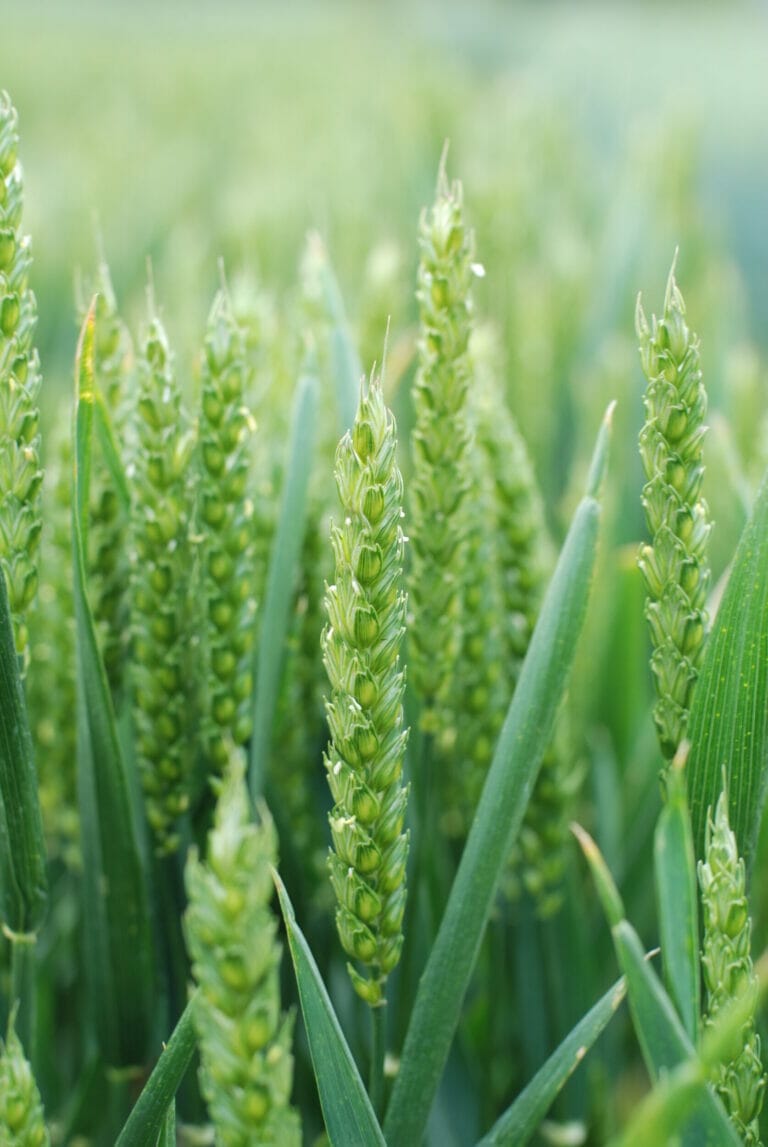Speaking about one of his clients’ crops grown near Amesbury, not far from Stonehenge, he reveals that he did not apply a fungicide at T0, emphasising that he thought it unnecessary as the crop was so clean.
This meant that the wheat received no SDHI, as the other fungicide applications are based on azoles.
“We are really pleased with the results of this variety in a really difficult year,” he says.
Despite the challenges of growing in the really difficult conditions posed in 2019/20, the crop looked good and harvested easily. The farmer was also pleased because it provided a lot of good quality straw for the farms livestock.

Drilling LG Skyscraper
“It senesced naturally and was ready early, ahead of the other wheat crops. This helps spread the use of the combine.”
Planted in mid-September before the weather broke, it followed winter oilseed rape. Soil structure is cared for by following a min-till and Vaderstad regime. Weed control included an application of Roundup (Glyphosate), Liberator (flufenacet + diflufenican) applied at 0.6l/ha plus 2.0l/ha Defy (prosulfocarb).
“We chose it as a barn filler because of its ability to give a good yield. It is considered to be a tall crop, but it is very responsive to PGR, which we applied in April, and we had no problems with lodging at all.
“Resistance to yellow rust rating and orange blossom midge resistance were also important to our decision making.
“In addition, we were pleased because it held out well against Septoria tritici.”
Plans are for more of his customers to plant LG Skyscraper this autumn, particularly those who are on chalky loamy soils, with residual nitrogen (N), or on Oxford brash. This is because he finds it does not need a high fertile soil to do well.
To help growers keep on top of any potential black-grass problems and also to avoid the earlier pressure from Septoria, Mr Clarke prefers to hold back planting.
“Normally we prefer to finish drilling on Bonfire Night, so we work our planting dates backwards from that.”
He is thinking of reducing the seed rate he used this year – which was 350 – down to 300.
“We find that thin crops can yield really well,” notes Mr Clarke who runs his own Oxfordshire-based farm alongside the independent agronomy consultancy.
“LG Skyscraper really seems to hold its own; if you want to grow Group 4 wheats, it is where you want to be.
“Our plans are to increase the area planted with this wheat variety.”
Versatility of drilling
LG Skyscraper fits the later drilling slot, and those who are delaying drilling for black-grass control, growing a second wheat or drilling wheat after beet or potatoes, should strongly consider this variety for the slot.
Late drilling presents a unique set of challenges to the crop; crops drilled later will not have been in the ground as long as those drilled earlier in the autumn, so the chosen variety needs to be quick off the blocks in the spring, once growing conditions are favourable.
For example, in a black-grass scenario, the variety needs to compete with its rapid growth rather than sit and tiller flat to the ground, eventually becoming smothered by it. The theory is not complicated, and this is why LG Skyscraper suits the blackgrass situation over a variety like LG Sundance which is high tillering with a late plant development in the spring.

Data from several seasons of work also suggests that taller wheats have an advantage regarding final yield potential in the later drilling scenario, and these larger plant canopies play an important role in keeping black-grass ear numbers and seed return to the minimum.
Top tips for later drilling wheat
- One of the single most important factors in getting a late drilled crop off to a good start is the correct seed rate.
- After the end of October seed rates are difficult to quantify as they are determined by the seasonal weather and seedbed preparation at the time of drilling.
- Seed rates are increased the further drilling moves towards the winter months to compensate for the impact on tillering of cooler temperatures and shorter days.
- In good conditions in early November, the target should be a seed rate of 375-400 seeds/m2, increasing to 400–475 seeds/m2 at later drill dates, or in a black-grass or poor seedbed situation.
Farm Facts:
Total planted area 100ha
Rotation:
First spring barley
Second spring barley
Winter oilseed rape
First wheat
Second wheat
Fungicide strategy:
T1 : Epoxiconazole, chlorothalonil,
T2: Epoxiconazole, chlorothalonil, and Proline
T3 Tebuconazole
PGR strategy:
2 splits:
T0: Modus (trinexapac-ethyl) and Chlormequat (chlormequat chloride)
T1: Chlormequat and Canopy (prohexadione-calcium and mepiquat chloride)

































